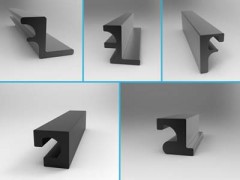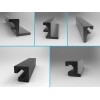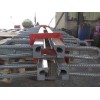In order to meet the requirements of the bridge deformation, single gap joints are usually set at each end of the bridge, between ends of the beam and abutment or on the hinge joints of the bridge. They are applied with rubber noise weaken board which can help to increase movement and reduce noise from over-passing traffic by up to 80%.
Features
Single gap joints are retractable and solid on both directions parallel and perpendicular to the bridge axis to ensure vehicles runs smoothly and no noise.
Single gap joints can prevent rainwater permeation and dirt clogging.
Single gap joints are simple and easy to install, check, maintain and clean.
Application
Single gap joints are suitable for kinds of bridges which are curved, slope, skew and wide. They can also perform well on both new-built bridges and bridges have been built, both asphalt and concrete bridge surface.
Having a limited depth of the structure and being able to be installed quickly, single gap joints are extremely well-positioned to replac the damaged one in a restoration project.






